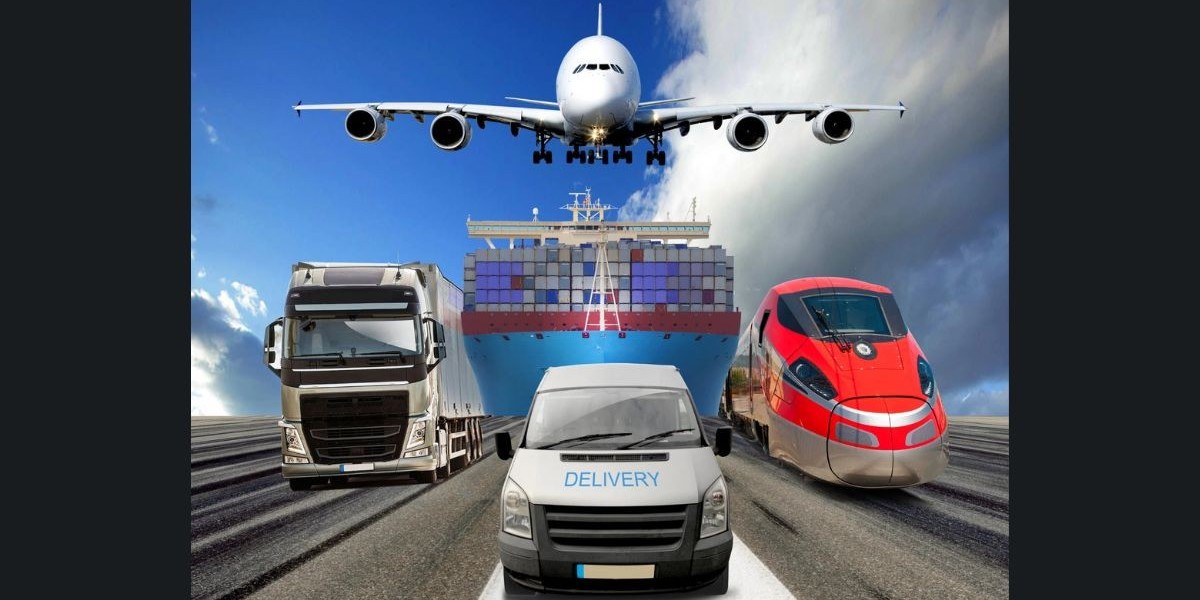Choosing the right shipping method is one of the most important decisions for businesses moving goods across regions or globally. Selecting the right freight solution not only saves costs but also ensures timely delivery, minimizes risks, and optimizes supply chain efficiency. With so many options available today, from trucking to air freight, ocean shipping, and intermodal solutions, companies must carefully analyze which shipping method aligns with their business goals.
In this guide, we will explore the best shipping methods for freight, explain their benefits and challenges, and highlight how businesses can make informed decisions that balance efficiency, speed, and cost-effectiveness.
Full Truckload Freight for Large Shipments
Full Truckload (FTL) freight shipping is an ideal option when a business has enough goods to fill an entire truck. This method ensures that the shipment moves directly from the origin to the destination without sharing space with other loads. The key benefit of FTL is faster transit times and reduced handling, which lowers the chances of damage.
Industries with high-volume shipping, such as retail, manufacturing, and wholesale, often prefer FTL for its reliability and speed. It also allows better control over the scheduling and routing process, making it one of the best shipping choices for time-sensitive or high-value goods.
Less Than Truckload Freight for Smaller Loads
Less Than Truckload (LTL) shipping is designed for businesses that need to transport goods that do not fill a whole truck. With LTL, multiple shippers share the same truck, making it a cost-effective solution.
Although transit times are longer compared to FTL due to multiple stops and transfers, LTL provides flexibility for smaller businesses that want affordable freight options. When combined with proper packaging and tracking, LTL becomes a dependable shipping method for managing smaller shipments efficiently.
Flatbed Trucking for Oversized Freight
Certain freight requires special handling and equipment, especially when the cargo cannot fit into a standard enclosed trailer. Flatbed trucking is the best solution for oversized and heavy equipment, machinery, or construction materials. Many flatbed trucking companies specialize in providing the expertise and tools required to secure these shipments safely.
Flatbed shipping offers flexibility in loading and unloading, which is especially useful for goods that require cranes or forklifts. However, because the cargo is exposed to weather conditions, businesses must use protective coverings to ensure the load’s safety during transit.
Intermodal Freight for Cost and Efficiency Balance
Intermodal freight shipping involves using multiple modes of transportation—such as combining trucks, trains, and ships—to move goods. This method is increasingly popular for long-distance shipping because it helps reduce costs, enhances fuel efficiency, and supports sustainable logistics practices.
Intermodal solutions work best when transit speed is not the top priority, but businesses want consistency, cost control, and a lower environmental footprint. With proper coordination, intermodal shipping can handle a wide variety of freight types across domestic and international routes.
Air Freight for Urgent Deliveries
When speed is the priority, air freight becomes the most efficient method of shipping. Although it is more expensive than land or sea transportation, it ensures rapid delivery of critical goods, such as electronics, pharmaceuticals, and perishable items.
Air freight also provides global reach, making it an excellent option for international shipments requiring tight deadlines. However, businesses must consider weight restrictions and higher costs, which often limit air freight use to high-value or time-sensitive shipments.
Ocean Freight for Global Trade
Ocean freight remains the backbone of international trade, handling the majority of global cargo. It is the most cost-effective method for transporting large volumes of goods internationally, though it comes with longer transit times compared to air.
Containerized shipping has made ocean freight reliable, secure, and scalable. Businesses engaged in importing or exporting bulk commodities, such as raw materials, textiles, or consumer goods, find ocean freight essential to their global operations. Careful planning around customs and documentation is critical for smooth transport.
Rail Freight for Bulk and Heavy Goods
Rail freight offers a cost-efficient and eco-friendly alternative for moving bulk commodities such as coal, grain, or chemicals. It provides high capacity for transporting heavy goods across long distances and reduces highway congestion.
Although rail transport may lack the flexibility of trucks for last-mile delivery, combining rail with trucking creates a powerful logistics strategy that balances cost and coverage. Businesses often integrate rail shipping into broader freight solutions to maximize efficiency.
Role of Freight Brokers and Forwarders
Navigating the complexities of freight shipping often requires expert guidance. Many businesses work with expert freight forwarders who coordinate international shipments, handle customs, and optimize multimodal logistics. Freight forwarders streamline processes for companies, ensuring goods move smoothly across borders.
Similarly, a freight broker in Texas can help businesses connect with reliable carriers, negotiate rates, and provide access to specialized equipment. These professionals help companies save time, reduce costs, and gain better visibility over their supply chain.
By leveraging services from freight brokers and forwarders, businesses can focus on operations while ensuring their goods are delivered efficiently and on time.
Choosing the Right Shipping Method for Your Freight
The best shipping method depends on multiple factors, including shipment size, urgency, budget, and the type of goods being transported. Businesses must balance cost with service level requirements, ensuring that delivery timelines and customer expectations are met.
For oversized equipment, flatbed shipping is the right choice, while air freight is the fastest for urgent shipments. Intermodal and rail freight support long-distance and bulk shipments efficiently, while ocean freight dominates international trade. Partnering with expert freight forwarders in Houston or reliable brokers further enhances decision-making, providing customized logistics strategies that align with business goals.
Conclusion
Selecting the best shipping method for freight is not a one-size-fits-all decision. Each method has unique benefits and limitations, and businesses must evaluate their specific requirements before choosing. By understanding available freight solutions and working with industry experts, companies can create a logistics strategy that optimizes efficiency, reduces costs, and ensures reliable deliveries.
FAQs
What is the most cost-effective shipping method for bulk goods?
Ocean freight and rail freight are usually the most cost-effective methods for bulk or heavy goods because they can transport large volumes at lower rates.
Which shipping method is best for urgent deliveries?
Air freight is the fastest option, ensuring delivery within tight deadlines, making it ideal for time-sensitive shipments.
What is the advantage of using flatbed trucking?
Flatbed trucking is best for oversized or irregularly shaped cargo, offering flexibility in loading and unloading with specialized equipment.
Why should businesses work with freight brokers or forwarders?
Freight brokers and forwarders provide expertise, carrier access, and rate negotiation, helping businesses save time, money, and resources while ensuring smooth logistics operations.
Can intermodal freight save money?
Yes, intermodal shipping can reduce transportation costs by combining rail, truck, and ship methods, improving efficiency and lowering environmental impact.








